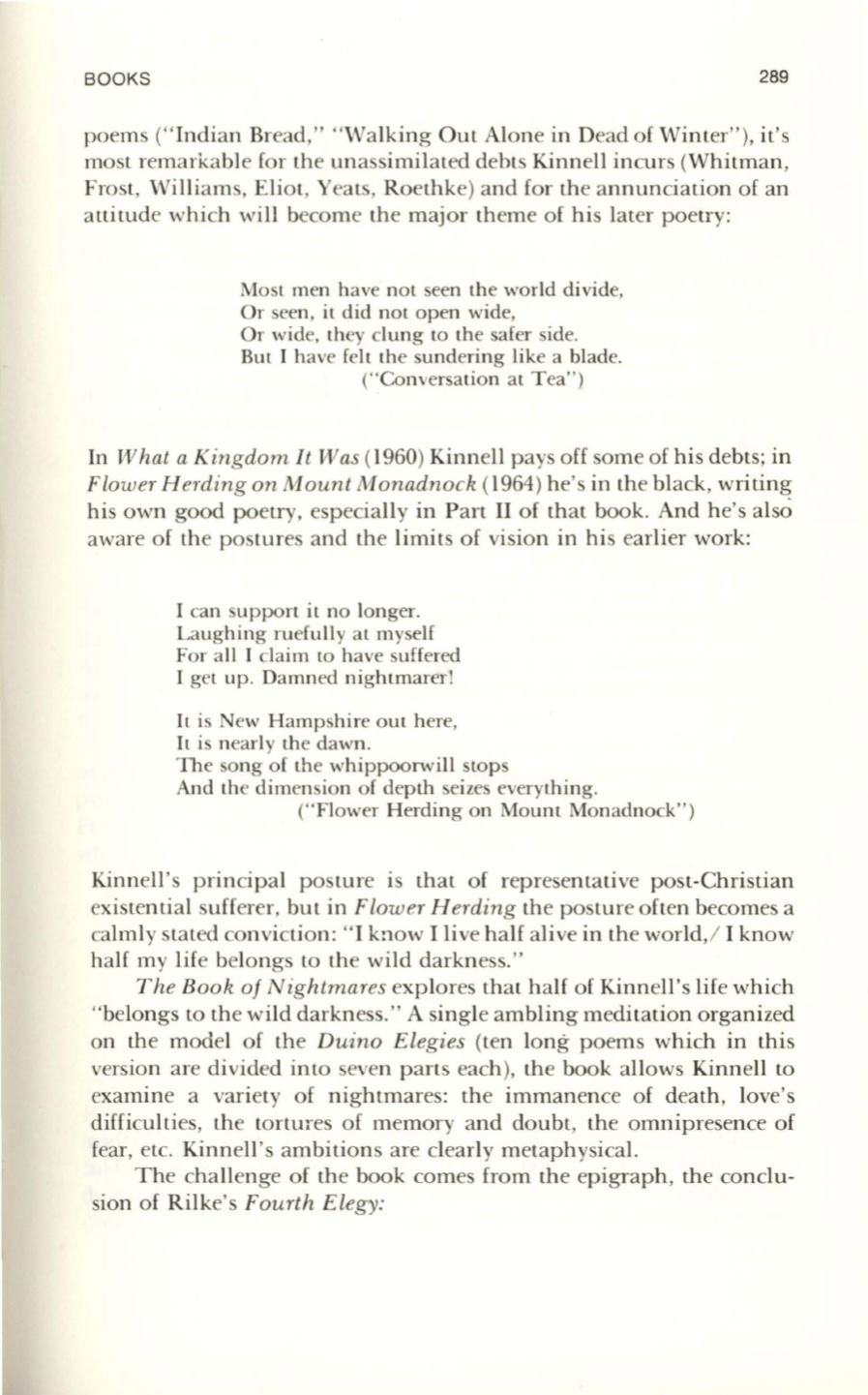
BOOKS
289
poems ("Indian Bread," "Walking Out Alone in Dead of Winter"), it's
most remarkable for the unassimilated debts Kinnell incurs (Whitman,
Frost, Williams, Eliot, Yeats, Roethke) and for the annunciation of an
altitude which will become the major theme of his later poetry:
Most men have not seen the world divide,
Or
seen, it did not open wide,
Or
wide, they clung to the safer side.
But I have felt the sundering like a blade.
("Conversation at Tea")
In
What a Kingdom It Was
(1960) Kinnell pays off some of his debts; in
Flower Herding on Mount Monadnock
(1964) he's in the black, writing
his own good poetry, especially in Part II of that book. And he's also
aware of the postures and the limits of vision in his earlier work:
I can support it no longer.
Laughing ruefully at myself
For all I claim to have suffered
I get up. Damned nightmarerl
It is New Hampshire out here,
II is nearly the dawn.
The song of the whippoorwill stops
And the dimension of depth seizes everything.
("Flower Herding on MOUnL Monadnock")
Kinnell 's principal posture is that of representative post-Christian
existential sufferer, bu t in
Flower Herding
the posture often becomes a
calmly stated conviction: "I k!1oW I live half alive in the world,! I know
half my life belongs to the wild darkness."
The Book of Nightmares
explores that half of Kinnell's life which
"belongs to the wild darkness." A sing le ambling meditation organized
on the model of the
Duino Elegies
(ten long poems which in this
version are divided into seven parts each), the book allows Kinnell to
examine a variety of nightmares: the immanence of death, love's
difficulties, the tortures of memory and doubt, the omnipresence of
fear, etc. Kinnell's ambitions are clearly metaphysical.
The challenge of the book comes from the epigraph, the conclu–
sion of Rilke's
Fourth Elegy:


